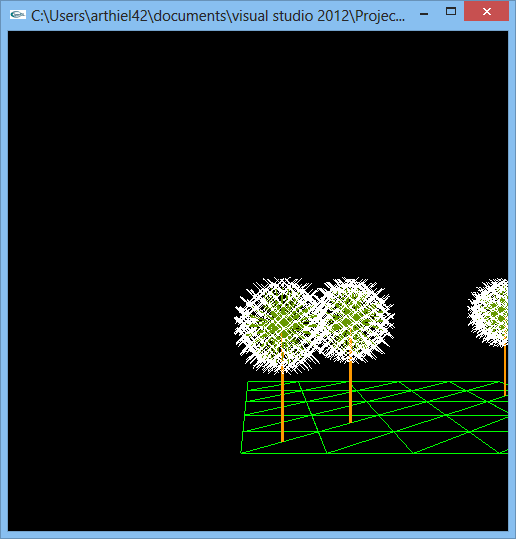 |
Dandelion with seedlet stalks and the geodesic sphere
they are created on, 3 tessellations. |
The first pieces of this project have come through, with a basic dandelion structure to be replicated by user command. There is a simple expandable / contractible field for the dandelion(s) to sit on, along with a single dandelion placed in the front left corner. This dandelion has a head created by a tessellated (geodesic) sphere. The user can increase the number of seedlets on the dandelion by increasing the number of tessellations. In the pictures, you can see the tessellations of 2 and 3.
From researching dandelions, I learned that they have fractal qualities to them, as they are structured around in a geodesic dome. I used this quality to structure the even spaces between each seedlet stalk. At each point on the sphere, I created a stalk back to the center of the dandelion.
Some changes that need to happen is for this to happen on a dome instead of a sphere. I'll need to cut off the bottom of the sphere to create that effect. Dandelions have a small "platform" in their center, not a ball. I also need to generate a thicker stalk for each seedlet.
At the tip of the seedlets are a base (a simple gluSphere for now) for the individual hairs that will stick out for a "furry" appearance that the dandelions have.
A basic camera is set up for viewing the field. It can be controlled with W, A, S, D. The field can be increased with J, and decreased with K.
The next step is creating multiple dandelions on demand, as well as setting up cameras for each individual dandelion.
 |
Dandelion with seedlet stalks, without geodesic
sphere, and 2 tessellations. |
 |
Dandelion with seedlet stalks without the sphere
structure. With 3 tessellations. |
























